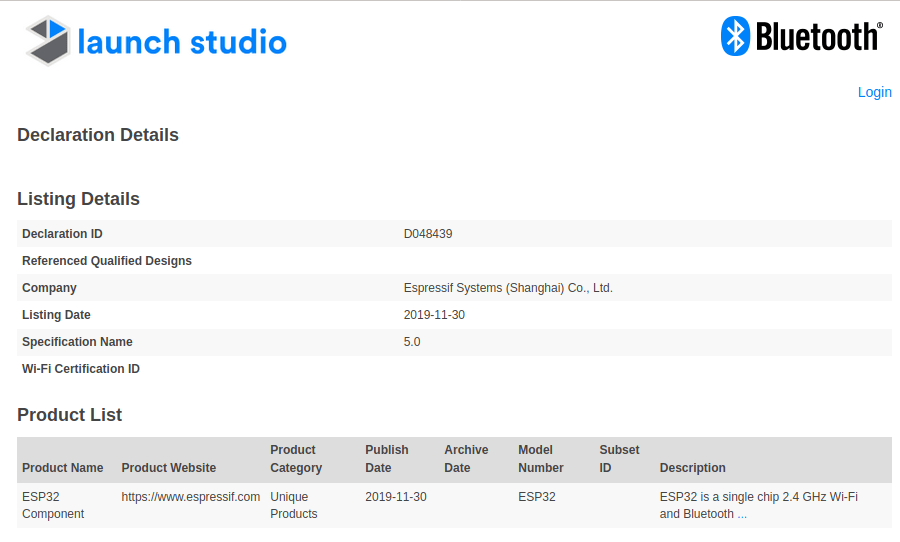Espressif Systems ESP32 was introduced in 2016, and one of the key differences between ESP8266 and ESP32 was that the latter supported Bluetooth 4.2.
But since then, the Bluetooth Special Interest Group (SIG) released Bluetooth 5.0 (2016) with higher speeds and longer range, and Bluetooth 5.1 (2019) adding direction finding for indoor positioning applications. One would have thought that upgrading from Bluetooth 4.2 to Bluetooth 5.0/5.1 might have required a new radio, but apparently not.
As you can see from the above link and screenshot, ESP32 is now Bluetooth LE 5.0-Certified having passed SIG Bluetooth LE 5.0 certification. That means the Bluetooth protocol version supported by the ESP32 microcontroller has been upgraded from Bluetooth LE 4.2 to Bluetooth LE 5.0 with improved stability and compatibility. Another link also shows Bluetooth 5.1 certification for ESP NimBLE Host stack.
Sadly that does not mean ESP32 suddenly supports the longer range and higher data rate made possible by Bluetooth 5.0 as explained in the announcement, as it would indeed require some hardware changes, and instead it’s really about improved compatibility.
ESP32 Bluetooth LE 5.0 certification means the software has been strengthened having passed a greater number of tests for the certifications. The Bluetooth LE Host protocol stack in ESP-IDF supports two types of Bluetooth LE Hosts: the aforementioned Bluetooth 5.1 certified NimBLE Host, as well as Bluedroid Host that should become Bluetooth LE 5.0 certified soon.

Jean-Luc started CNX Software in 2010 as a part-time endeavor, before quitting his job as a software engineering manager, and starting to write daily news, and reviews full time later in 2011.
Support CNX Software! Donate via cryptocurrencies, become a Patron on Patreon, or purchase goods on Amazon or Aliexpress





